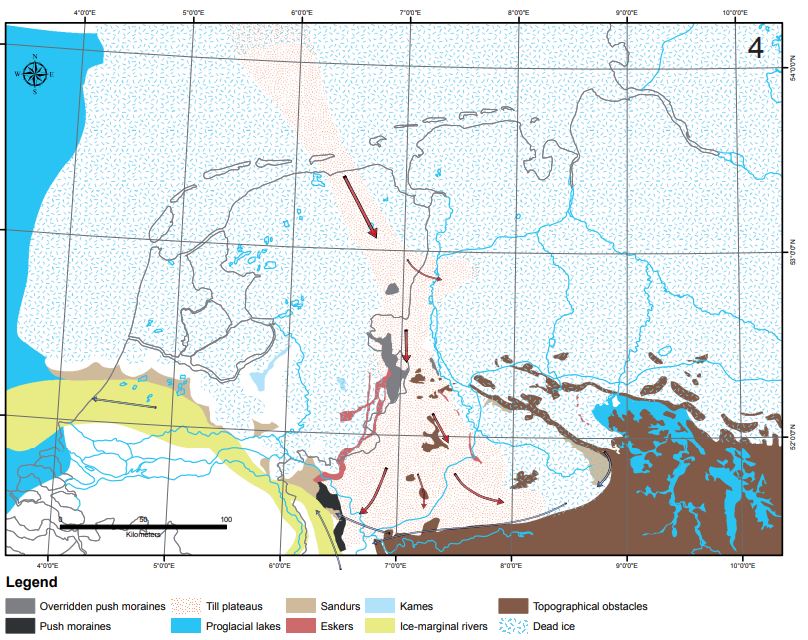An integrated approach to reconstruct the Saalian glaciation in the Netherlands and NW Germany, Pierik, Bregman and Cohen, 2010
At the end of the Saale ice age, around 170,000-150,000 years ago, large ice masses last covered the Netherlands and NW Germany (Saalian Drenthe Substage). It left many geomorphological features in the landscape, e.g. push moraines, sandurs and glacial basins. Throughout the 20th century extensive research has been done on this geomorphological assemblage and the sequence of glacial events, resulting in glaciation phase models. However, the various phase models each appear biased to specific features, subregions and types-of-data. Besides, new data and insights have risen since the construction of these models. Our newly constructed phase model recognises four phases towards maximum ice-sheet extent, and one complex deglaciation phase.
An_integrated_approach_to_reconstruct_the_Saalian_glaciation_in_the_Netherlands_and_NW_Germany-Pierik_Bregman_Cohen-April2010Download

